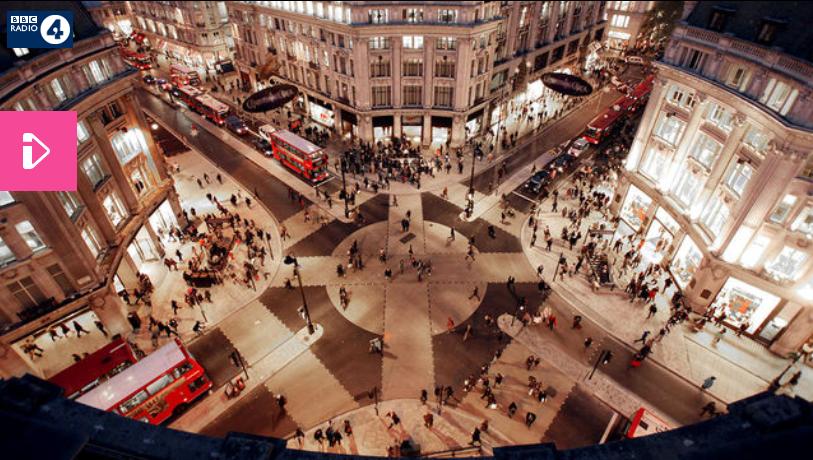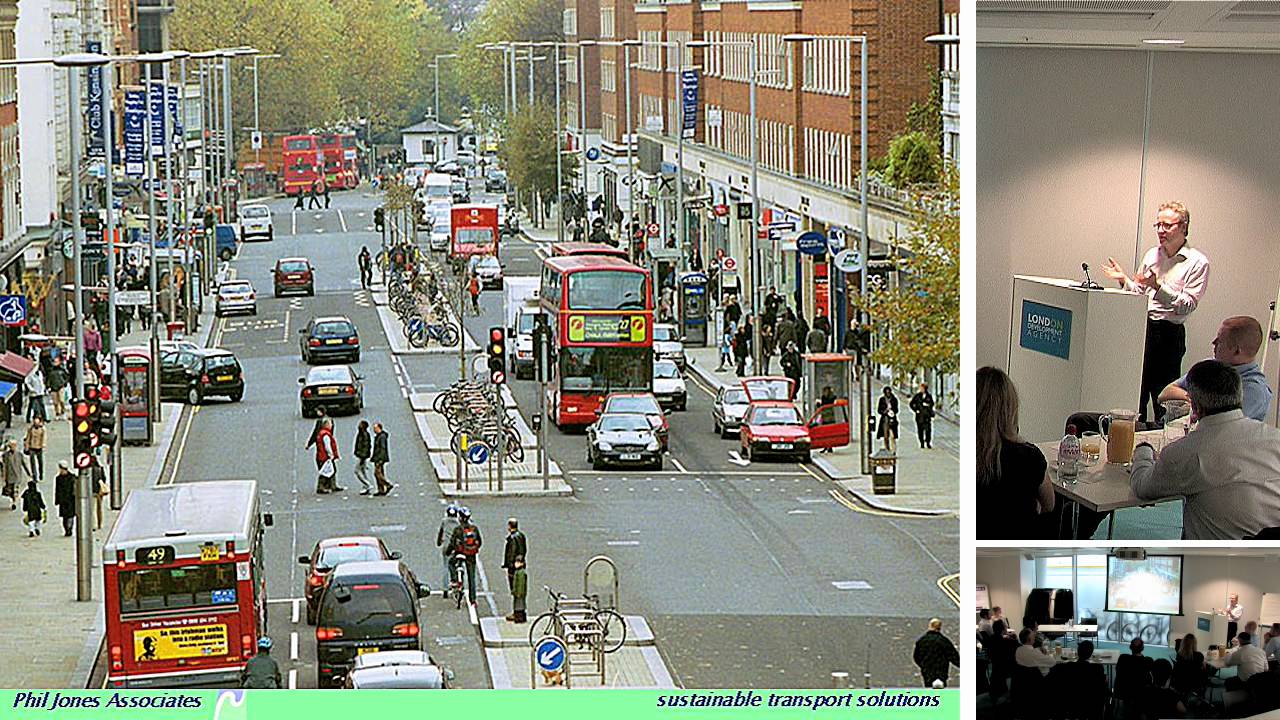
The term has been widely applied, especially by Ben Hamilton-Baillie, since the preparation of a European co-operation project in 2003. The term was used by Tim Pharoah to describe informal street layouts with no traffic demarcation (for example "Traffic Calming Guidelines", Devon County Council, 1991).

Prior to the adoption of the term, street design projects carried out in Chambéry, France, by Michel Deronzier from the 1980s used the term "pedestrian priority". The origin of the term is generally linked with the work of Dutch traffic engineer Hans Monderman, who pioneered the method in the Dutch province of Friesland. Shared space is often opposed by organisations representing the interests of blind, partially sighted, and deaf people, who usually express a preference for the clear separation of pedestrian and vehicular traffic. As a separate concept, "shared space" normally applies to semi-open spaces on busier roads, and here it is controversial. Variations of shared space are often used in urban settings, especially those that have been made nearly car-free ( Dutch: autoluwe), and as part of living streets within residential areas. Shared space design can take many different forms depending on the level of demarcation and segregation between different transportation modes.
#Shared space roads youtube drivers#
Hans Monderman and others have suggested that, by creating a greater sense of uncertainty and making it unclear who has priority, drivers will reduce their speed, in turn reducing the dominance of vehicles, reducing road casualty rates, and improving safety for other road users.

This is done by removing features such as kerbs, road surface markings, traffic signs, and traffic lights. Shared space is an urban design approach that minimises the segregation between modes of road user. A shared space scheme in New Road, Brighton, United Kingdom


 0 kommentar(er)
0 kommentar(er)
